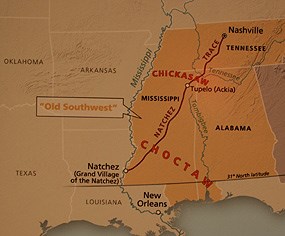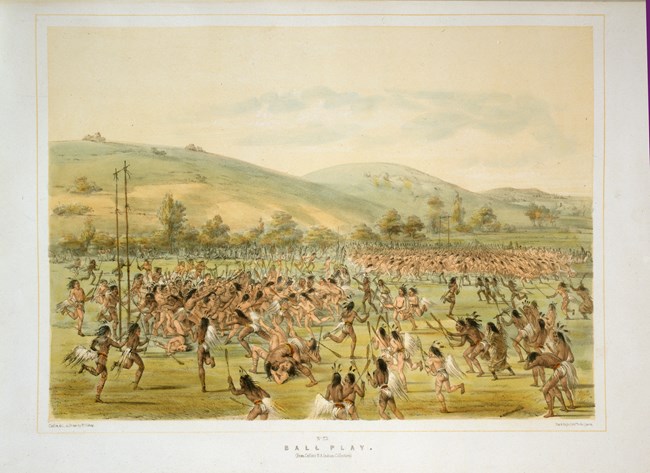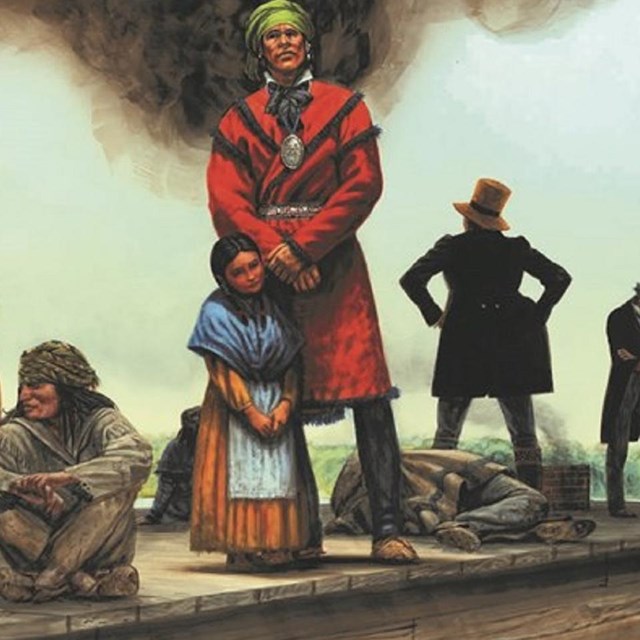

Culture
The Choctaw people's ancestral homeland spanned from most of central and southern Mississippi into parts of eastern Louisiana and western Alabama. The Choctaw were fierce warriors, excellent farmers, and skilled traders. There are now two federally recognized Choctaw tribes. The Choctaw Nation of Oklahoma was formed by over 13,000 Choctaw people who were removed from their homeland during the Trail of Tears between 1831 and 1838. The Mississippi Band of Choctaw Indians was formed by approximately 6,000 Choctaw people who, duing that time, refused to be removed to Oklahoma.
Historically, the Choctaw were not nomadic, which enabled them to become accomplished agriculturalists. They often grew great surpluses of corn and other crops to trade with other American Indian tribes and later, Europeans and Americans.

Sports have always played an important role in Choctaw culture. Stickball is a traditional team sport still played today. Historically, stickball was often used to settle rivalries and disputes between different tribes and families. Stickball also created friendly competition amongst different clans and tribes.
Fierce warriors, during the early 1700s the Choctaw people allied with European forces, often aiding in battles against other American Indian groups. Alliances with Europeans provided a measure of security to the tribes during a rapidly changing cultural landscape. The French were one of the first European groups to ally with the Choctaw, and in the early 1700s their combined forces decimated the Natchez Indians, killing most of them and forcing the rest to flee their homelands and join other tribes.
Removal
With the influx of American colonizers settling in the Southern United States, American Indian peoples were soon displaced from their homelands, sometimes by treaties and political manipulation, and other times by force. In the 1801 Treaty of Fort Adams, Choctaw chiefs were persuaded to cede over 2 1/2 million acres of land. Several other treaties an additional 23 million acres. The Treaty of Dancing Rabbit Creek was the last treaty, the precursor to the Indian Removal of the following decade.
Although hundreds of petitions flooded Washington D.C. claiming this Indian Removal Act was immoral, destructive, and wrong. President Andrew Jackson and the US Congress passed the act, forcing the Choctaw and other tribes, to relinquish their homelands completely, and move westward. The act passed the House in May 1830, by only five votes.
The Choctaw walked this long journey from Mississippi to Oklahoma, a harsh trek that killed many along the way. The first American Indian tribe to be removed to Oklahoma, the Choctaw suffered greatly. Roughly 70,000 people were forced out of the region and at least 3,000 lost their lives on the march. This forced walk is now commemorated as the Trail of Tears.

The trail of tears was the forced relocation of many American Indian nations. Over 3,000 people lost their lives on the arduous trek.
 a stickball stick." width="" />
a stickball stick." width="" />
The Choctaw Nation of Oklahoma has over 200,000 tribal members. Their vision is, “Living out the Chahta Spirit of faith, family & culture."